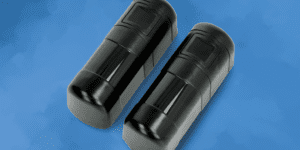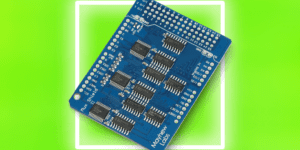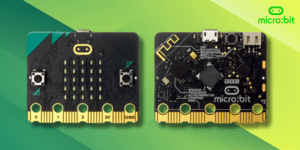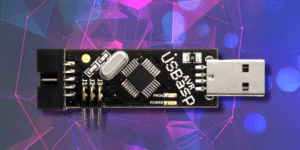Spis treści:
The versatile, ubiquitous SparkFun tiles. Think about any electronic project and you can find at least a few models of SparkFun boards which you could use. The functions of the modules from this producer are countless, and the fact that almost all of them are compatible with each other makes you sure, that your project will be successful and you will be satisfied with its functioning. So let’s see more new red modules in the third set of news from SparkFun in Botland.
OpenLog Artemis
There are projects where a lot of data needs to be collected, e.g. to calculate an average, to create a climate model (in more advanced weather stations) or systems measuring values of various parameters for home or industrial use. Creating such a system on one’s own could be for many a task from the category of more difficult ones, but fortunately, we have a ready-to-use SparkFun OpenLog Artemis system at our disposal.

A small size board is a data logger, which has been additionally pre-programmed to read data e.g. from temperature and humidity sensors, from GPS or those coming from a serial UART port. Like most SparkFun boards, it has a Qwiic connector, and it is worth mentioning here that after connecting other sensors in this way, this module will automatically detect, configure and register the connected sensors. What a convenience!
On the surface of a small square board, there is quite a lot going on. On board, in addition to the previously mentioned Qwiic connector, we also have USB-C, a 2×5 SWD connector, LEDs, a connector for a Li-Pol battery (yes, the board can have its own power supply), a reset button and a memory card slot where data is saved. We also have access to solder fields, among which we can find 4 ADC outputs, thanks to which we can record analog data. Moreover, the module has a built-in real-time clock, thanks to which all acquired data can have a time signature.
Motion sensor
Various types of alarm systems are becoming more and more accessible. We can now find sophisticated property security or automation solutions on virtually every street corner, and in many buildings and homes. Most often such devices are based on motion sensors, which is probably the simplest solution, which does not necessarily have to be used only for this purpose. Automatic light switches are also things that make our everyday life more pleasant.
If you have a desire and an idea for an electronic project using a motion detector, we recommend the PIR motion detector module. This type of sensors do not return specific distance data, but they react to low infrared radiation. The applied EKMC4607112K chip of EKM series from Panasonic ensures detection of objects up to the distance of 5m. The detection area is 90° x 90° (± 45°).

As is common with SparkFun modules, the square red board has two Qwiic connectors and solder fields to connect other devices of this ecosystem as well as devices communicating via I2C protocol. So if you need a motion sensor for an electronic system built on other SparkFun boards, this module can be used without hesitation.
Joystick
The development of electronics has strongly contributed to the growth of the entertainment sector. Many of us remember the first consoles from our childhood, and their success has ensured that these devices remain popular to this day. Whether it’s games, consoles or controllers, these devices have become iconic over time. But what if we wanted to apply similar control solutions to electronic projects?

A module with a 4-directional joystick can help – the same as in the well-known gaming consoles. Operating a robotic arm based on servo motors with such a module will be a pure pleasure. Or maybe you would like to make your own version of a gaming pad? This is also possible!
At the heart of the module is an Attiny85 chip, which will handle and process the incoming data. Qwiic connectors, which the module is equipped with twice, and 4 solder fields where we can solder other devices using I2C communication may be helpful in implementation. In order to use more than one joystick on the same bus it is necessary to use an appropriate multiplexer. So, there is a potential for an interesting way to control a robot, or for a universal DIY controller.
Relay Module
What else can be controlled? In electronic terms, pretty much anything that has a voltage applied to it. And with the Omron G5LE relay on the SparkFun relay module, controlling light or motors is a snap. The uncomplicated connection is a great advantage of this module, because simplicity is the key to success in this type of device control.
It has an I2C interface for controlling the relay using platforms like Arduino or Raspberry Pi and has two Qwiic connectors, as befits a SparkFun module. The terminals are rated for 240V and 5.5A, and the board itself has adequate protection to ensure safe operation with most devices.

Ideas for application? A remote-controlled fan or automatic light switching using a motion sensor – the module will certainly come in handy in such projects.
Logic Level Shifter
If in the circuit being built, due to the use of many different elements, there is a need for parallel operation of several voltage values, the element we should be interested in is a logic level converter, or in other words a voltage translator.

Such elements allow communication between devices operating at different voltage levels. Sometimes it happens that an important sensor operates on 3.3V and the rest of the circuit requires 5V. But instead of panicking, or preparing a return form to the shop, we can get around this inaccuracy.
An 8-channel, bidirectional logic level translator, the SparkFun Level Shifter, is the component that makes this possible. It lowers 5V to 3.3V and raises 3.3 to 5V at the same time. This feature is useful in bidirectional communication protocols such as SPI. An additional positive aspect of the board is the high data transfer rate between ports of up to 110 Mbps.
16×2 LCD displays
Alphanumeric displays are such elements that significantly increase the functionality of electronic devices and are often the main or even the only element of the user interface. Often, however, their connection when constructing circuits that use them can be an obstacle for electronics beginners. What if we could connect them with Qwiic connector, known from SparkFun modules?


The next point of this list is as many as two such displays. These are twin devices, with the difference that one has RGB colour backlight, while the other has this type of backlighting for the characters only. The difference between them is therefore seemingly small and insignificant, and yet large from the point of view of applications. For design customisation, having such a choice is a nice thing.
Both LCD displays have a built-in Atmega 328P AVR microcontroller. Its use ensures communication via UART, I2C and SPI buses. Modification of the screen parameters can also be done via software. Pulse width modulation, also known as PWM, makes it possible to control backlight and contrast values. The modules are also compatible with Arduino IDE environment. So, if their operation is that simplified, there is nothing left to do but to organise your own unit and plug it in.
OLED display
Staying on the topic of displays, one interesting item has also arrived at Botland recently. Concluding today’s list, we would like to present a module with a monochrome OLED display with a diagonal of 0.66″ and a resolution of 64 x 48 px. Such a small size makes it ideal for projects that are unlikely to reach the top of the rankings in terms of the amount of free space.
Don’t be surprised by the different shape of the board – SparkFun got us used to the regularity and simplicity of its boards, however, somewhere there had to be assembly holes – these stick out beyond the outline. The screen itself can also extend beyond the edge of the module – it is fixed on an elastic band.

The module can display graphics or text in blue, is powered by 3.3V and, yes you guessed it, uses the I2C protocol for communication. There are two Qwiic connectors at our disposal, and separate solder fields. One thing is sure – also in this case, there will be no problems with connection and communication.
How useful was this post?
Click on a star to rate it!
Average rating 0 / 5. Vote count: 0
No votes so far! Be the first to rate this post.







